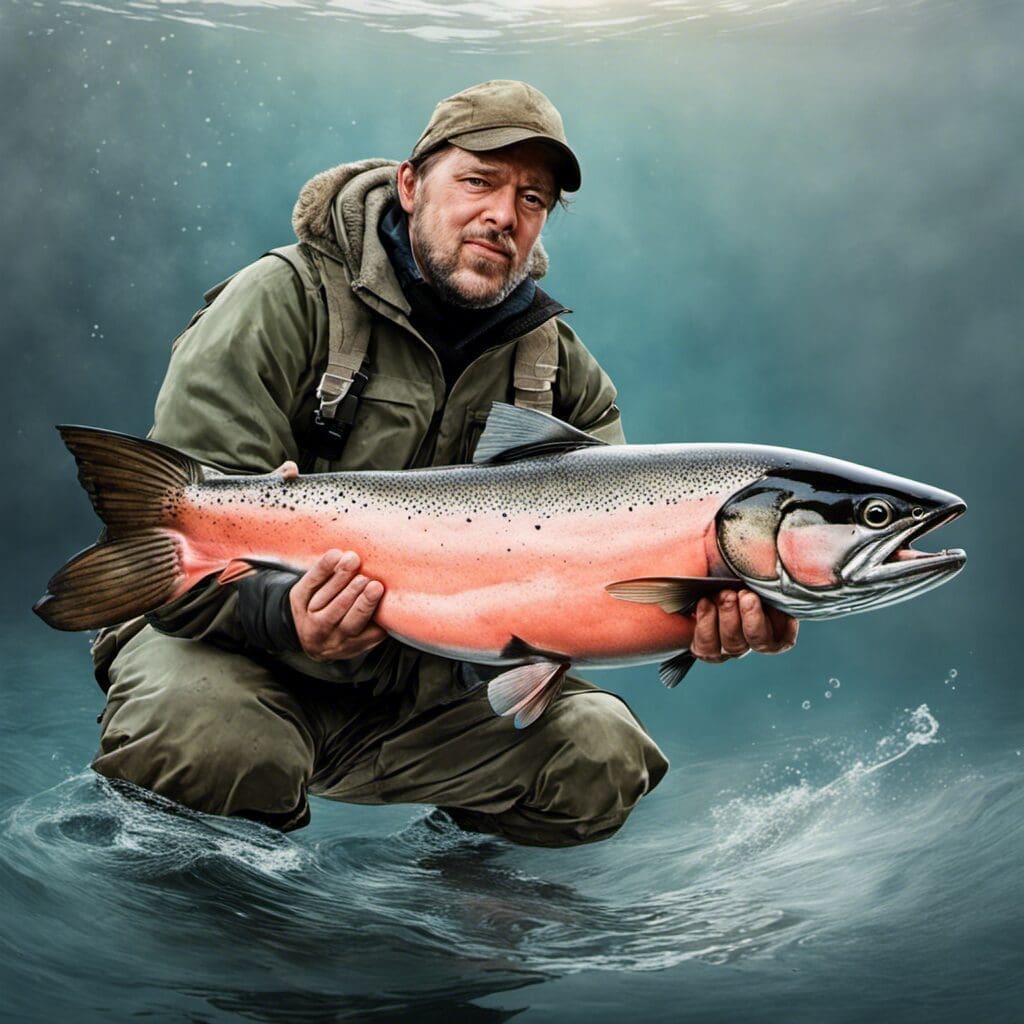Introduction
The Chinook Salmon (Oncorhynchus tshawytscha), also known as the King Salmon, is a distinctive species from the family Salmonidae.
Conservation Status
According to the National Oceanic and Atmospheric Administration (NOAA), Chinook Salmon is classified as a Threatened species under the Endangered Species Act in many regions.
Conservation Efforts
Conservation efforts for the Chinook Salmon include habitat protection and restoration, decreasing pollution, allowing for fish passage by modifying or removing dams, and hatchery reform programs.
Statistics
| Length (Average – Range) | Weight (Average – Range) | Average Lifespan |
|---|---|---|
| 36 inches - (24 – 58 inches) | 30 pounds – (10 – 50 pounds) | 3 to 7 years |
Distribution
Regions/Countries
The Chinook Salmon is distributed across the northern Pacific Ocean and rivers draining into it from North America to Asia. They are found in US and Canadian waters, particularly in Alaska, Washington, and Oregon.
Migration Patterns
Chinook Salmon are anadromous, meaning they migrate from the ocean up rivers and streams to spawn. After hatching, the young Chinook may spend up to a year in their freshwater natal habitat before migrating downstream to the ocean.
Habitats
Chinook Salmon are known to inhabit freshwater environments including rivers, streams and estuaries during various stages of life. They thrive in temperatures of 7-14°C.
When and Where to See
Chinook Salmon are mostly seen during the summer months when they start their migration back to their birth rivers for spawning.
Best Fishing Locations
Including but not limited to the Sacramento River, Kenai River, Columbia River, Yukon River, Klamath River, Rogue River, and Fraser River.
How to Catch
Chinook Salmon can be caught using a variety of methods, including trolling with bait or lures, fly fishing, and bottom fishing.
Identification Guide
Chinook Salmon are olive-green to blue on the back, silver on the sides, and white on the belly. They are known for their large size and are the largest species in the Pacific salmon family.
Culinary
Chinook Salmon is highly valued in gastronomy for its tender flesh and rich flavor.
Additional Information
Chinook Salmon has a unique lifecycle that involves migrations from freshwater to oceanic environments, which provides opportunities for various forms of predation. Bears, eagles, and other large predators are natural predators, while humans pose threats from overfishing and habitat destruction.
References and Further Reading
- Freshwater and Marine Image Bank, University of Washington Libraries Digital Collections. Image Bank.
- NOAA Fisheries. Chinook Salmon.

